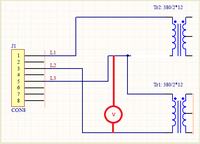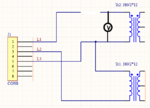electronicsIUST
Member level 3
Hi, I have a circuit with two transformer.Each of which has two phases in the primary winding. But the problem is when I disconnect one of phases (for example L1) from Tr2, there is still voltage in that disconnected phase that is due to return voltage of Tr2. What is the reason for this?!





